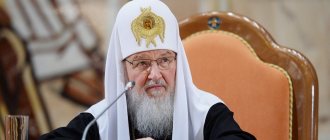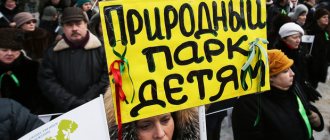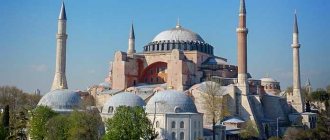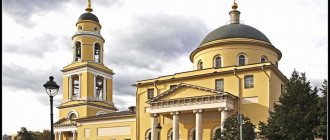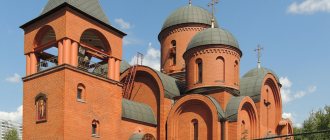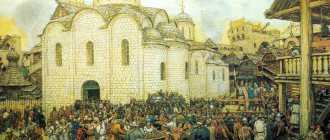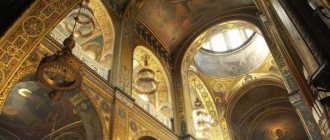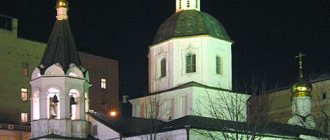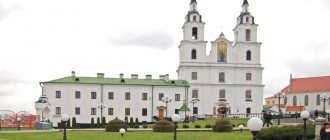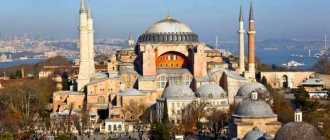Kyiv is the pearl of Temples and Cathedrals. This ancient city, where faith and religion are intertwined with mysticism and occult practices, is considered both the City of Temples and the witch capital. It is here that the oldest Orthodox Churches of Ukraine are located, which played an important role for Ukraine, both in historical, archaeological, and general cultural and educational terms. We present to you an overview of the main Orthodox and Catholic Temples and Cathedrals of the Ukrainian capital.
Kiev-Pechersk Lavra
Kiev-Pechersk Lavra
The Kiev Pechersk Lavra is perhaps the main shrine of Kyiv. The monastery is steeped in centuries-old history. Pilgrims from all over the world come to the Kiev Pechersk Lavra. Time stands still here! When you enter the territory of the Lavra, you plunge into an atmosphere of complete calm and God's grace. Also in the Kiev-Pechersk Lavra you can visit interesting museums (Museum of Icons, Museum of the History of the Kiev-Pechersk Lavra, Museum of the Book). And for girls who are interested in fashion, they will like the exhibition of vintage dresses that regularly takes place there.
Sofia Kyiv
Sofia Kyiv
Another gem with a huge history. The temple grounds are beautiful and landscaped. Here it will be interesting to climb the high Bell Tower, climbing the steps of which you will feel like the heroes of the film “Notre Dame de Paris”. You can also visit the main churches of St. Sophia of Kyiv and see how the monks lived here.
Description[edit]
Kiev St. Sophia Cathedral was one of the largest buildings of its time. The total width of the temple is 54.6 m, length - 41.7 m, height to the zenith of the central dome - 28.6 m. The cathedral has five naves, completed in the east with apses, crowned with 13 domes forming a pyramidal silhouette, and is surrounded by three sides with two rows of open galleries, of which the inner one has two tiers. For a long time it was believed that the galleries were added to the cathedral later, but recent research has proven that they are connected with it by a single design and arose simultaneously. Only the baptistery, built into the western gallery, dates back to the mid-12th century.
Plan of Sophia of Kyiv
The spatial solution of the central core is cross-domed. It is surrounded on three sides by extremely spacious choirs, opening into the temple with triple arcades. Obviously, the choirs were intended not only for the presence of the princely family during divine services, but also to house the main institutions of the Kyiv Metropolis - a chamber for ceremonial events, a library with a scriptorium (a workshop for the production of handwritten books), an office, and a treasury. To ascend to the choir, two towers with spiral staircases are built into the western gallery.
Sophia of Kiev is a perfect example of a synthesis of arts. The mural painting and decorative decoration form an indivisible whole with the architecture of the temple. In the Kiev Cathedral, a combination of mosaics with frescoes in one interior, unusual for Byzantium, was used. At the same time, mosaic images cover only the most important parts of the temple - the main altar and the central dome; the rest of the interior is decorated with fresco murals. Remains of frescoes were also found on the facades - in niches and on gallery pillars.
The floor in the altar and the central part (chorus) was laid with slate slabs inlaid with mosaics, and in other parts - with ceramic tiles. Many design elements were carved from imported Greek marble. The thresholds and columns, the low pre-altar fence-templon and the canopy-ciborium above the throne were marble. The slate parapets of the choir fence are covered with carved ornaments.
An outstanding historical source is the complex of graffiti inscriptions scratched on the walls of the cathedral by its visitors over the centuries. Among them there are autographs of famous historical figures of medieval Rus'.
St. Andrew's Cathedral
St. Andrew's Cathedral
One of the most beautiful and mystical churches in Kyiv. Located above Podil, St. Andrew's Church majestically towers over the entire city. Unfortunately, in recent years it has been impossible to get into the Church; reconstruction work is underway.
Read: Study, student: top 7 popular universities in Kyiv
Church of the Assumption of the Virgin Mary Pirogoschi
Church of the Assumption of the Virgin Mary Pirogishchi
The unique Temple, which survived 3 fires and all sorts of destruction, was built in the style of classicism. Today the Temple is the main decoration of Podol. It was erected back in the 12th century by the princes of Kyiv. And the pearl of Orthodoxy received its name thanks to the icon of the Mother of God, which was popularly called “Pirogische”.
Architecture
The Church of Hagia Sophia in Kyiv, according to its architectural forms, has not changed practically from its original appearance to modern days. The rectangular projection of the structure is divided by cross pillars into 5 naves (aisles), intersecting with transepts (perpendicular aisles).
At the intersection of the largest nave with the transept, a cruciform space under the dome is formed. The distance from the base of the floor to the elevation is 29 m, and the diameter under the dome is 7.7 m.
The dimensions of the building (length and width) are 29 m, but thanks to the presence of two-tier galleries on 3 sides and a wide one on the outside, the dimensional characteristics increase to 42 and 55 m. In the center of the cathedral there are choirs in the shape of the letter “p”, which you can climb along spiral staircases located on the north and south sides.
The building was made in the Byzantine style by alternating masonry of stone and flattened brick, laid on a sand-lime mixture with the addition of brick chips.
Initially, the stone and brickwork of the building was not covered; after reconstruction (XVІІ-XVIII centuries) the façade was plastered and whitewashed. Today, limited areas of the façade with ancient masonry can be observed on the building.
The original architectural structure of the cathedral was symbolic. The central dome of the building was identified with Jesus Christ, and 12 smaller domes were associated with the apostles. During the period of restoration work in the 17th-18th centuries, the cathedral was rebuilt and began to have 19 domes, plaster and whitewash were applied, and the hemispherical tops of the domes were replaced with pear-shaped ones.
Church of St. Nicholas the Good
Church of St. Nicholas the Good
The Temple of St. Nicholas the Good is another Kiev shrine, described in the books of the famous Ukrainian writer, Lada Luzina. The Church was built in the 19th century according to Melensky's design. During the Soviet years, the temple was destroyed. Today only the bell tower remains. In this temple in 1913, Bulgakov’s wedding to his first wife took place.
Nicholas Church
Nicholas Church
This church is one of the most beautiful Christian buildings in Kyiv. Looking at St. Nicholas Church, you get the impression that you are in Paris or Barcelona, it is so beautiful and majestic. Since 1980, the House of Organ and Chamber Music has existed in the Temple. And it was built at the end of the 19th century in the neo-Gothic style.
Read: Eco-Park Medvino - as Askania Nova, just closer
New times
Prince Vladimir Svyatoslavovich in historical and popular memory still remained more likely the last Varangian king than an Orthodox sovereign. And his epic alter ego Red Sun feasts with his squad and visiting heroes, not caring at all about Christian humility and abstinence. Yaroslav is a different matter. Despite the fact that historians find many blank spots in his biography, he is already perceived as a pious Orthodox monarch, builder of churches and founder of monasteries, patron of book sciences and arts, creator of the Church Charter and “Russian Truth” - the first set of laws. Yaroslav became related to a good half of European courts, marrying off his daughters and looking for overseas wives for his numerous sons. In the official history of the Russian Empire, he was given the place of the creator of the Orthodox state, which was subsequently emphasized by the nickname Wise, which appeared in the mid-19th century.
Photo: commons.wikimedia.org
Prince Yaroslav the Wise. Portrait from the Tsar's title book, 17th century
Painting for inventory: who and how is stealing ancient icons in northern churches
And is it possible to protect the remaining treasures in remote small villages?
Yaroslav dreamed of turning Kyiv into the new capital of world Orthodoxy, the successor of Jerusalem and Constantinople. But for this the city had to have the appropriate attributes. Hence the construction of the Golden Gate, and the establishment of the Georgievsky and Irininsky monasteries, just like in Constantinople. Any traveler who entered the Golden Gate of the capital of Byzantium passed between these monasteries and came to the main temple of the city - Hagia Sophia. Yaroslav had no choice - he had to build a similar cathedral in Kyiv.
Pokrovsky Monastery
Pokrovsky Monastery
The Intercession Convent was founded by the wife of Grand Duke Nikolai Nikolaevich Anastasia (Alexandra Petrovna Romanova), who not only invested money in the construction of the Temple, but also lived here for some time. The monastery consisted of cells, temples, a hospital, an orphanage, a clinic, and other outbuildings. Today the abbess of the monastery is Abbess Kallisthenia.
Interior decoration
The interior of the temple has remained virtually unchanged since the 11th century. The central place in the interior decoration of the temple is occupied by the space under the dome in the form of a cross. In the eastern part of the building there is the main apse (the protruding part of the structure), in the north and south
two-tier arcades (open galleries in the form of arches) were built. On the western side there was a third arcade, which has not survived to this day (it was removed in the 13th century). A lot of light enters the church due to the presence of numerous window openings in the pierced cylinders of the domes.
The interior decoration of the St. Sophia Church includes:
- original mosaics;
- original frescoes;
- medallions with images located in them;
- graffiti (including the 11th-12th centuries) in the amount of 7000.
The partitions and pillars of the building are decorated with images of more than 500 saints. The dome vaults depict scenes from the Bible with Orthodox motifs. The medallions represent figures of angels.
The Church of Hagia Sophia in Kyiv (from the western direction, under the main dome) houses a huge family illustration of the princely family, occupying 3 walls of the central corridor (an area fenced off by columns).
Until the modern period, only the side sections of the fresco remained intact: 4 silhouettes of princes and 2 figures of princesses on opposite sides. The middle part of the illustration depicting the prince and princess was destroyed during the dismantling of the western gallery (in the 13th century).
Versions regarding the characters in the fresco differ:
- some historians believe that this is the family of Yaroslav the Wise;
- Professor N. Nikitenko thinks that the painting depicts the family of Vladimir the Great.
Church of St. Nicholas the Wonderworker on the Waters
Church of St. Nicholas the Wonderworker on the Waters
One of the most beautiful churches in Kyiv. Parishioners from all Ukrainian cities come here. This is the only Church in Ukraine located on the water, which can be reached via a bridge. For Kiev residents and guests of Kyiv, the Church of St. Nicholas the Wonderworker on the Waters has become the “calling card” of the city.
Temple of St. Roman the Sweet Singer
Temple of St. Roman the Sweet Singer
The temple was erected at the end of the 19th century. During the Soviet years it was not destroyed, but was used as an administrative building. In the 2000s, the barn and chapel at the Temple of St. Roman the Sweet Singer were reconstructed. Today everyone can visit this temple. There is also a library and Sunday school on its territory.
Frescoes and mosaics
Mosaics (stained glass) decorate the central dome and the main altar of the shrine - these are images created on wet plaster from glass pieces.
The central dome and main altar represent the main biblical characters according to their hierarchy. All mosaics in the cathedral are original and date back to the 11th century. In the 19th century, damaged areas of paintings were painted with oil-based ink.
The main images from the mosaic include the following:
- Christ Pantocrator, depicted in the largest space under the dome in a medallion measuring 4.1 m. The image is framed by nine circles of different colors. On four sides of Christ there is an archangel: the only saint in blue vestments is made of mosaic, and the rest are painted by Vrubel.
- 12 archangels under the central dome are located between the window openings of the cylinder. The silhouettes of Paul and Mark have been preserved in the form of stained glass. The rest of the stained glass works have survived to this day in the form of pieces.
- The Sebastian sufferers are depicted on spring-loaded arches in the north and south directions. 15 medallions survived.
- The Deesis mosaic , located in the altar arch, dates back to the 11th-18th centuries.
- The central altar contains a mosaic Oranta in the form of a huge silhouette (approximately 6 m high) of the praying Mother of God.
Oranta in the Church of Hagia Sophia in Kyiv - The Eucharist is a stained glass window, including many silhouettes, located under Oranta. The work depicts the communion of the apostles before Jesus Christ, the figures are arranged symmetrically on the altar.
- In the lower part of the protruding section of the temple, between the columns there are images of the venerable saints - archdeacons . Mostly the top piece of stained glass has survived.
- Other stained glass works of the temple:
- Apostle Paul;
- Christ the Priest;
- a figure of Aaron on the central altar;
- finishing patterns on the main altar.
The Church of St. Sophia in Kyiv is rich in frescoes, which are paintings with water-based paints on a damp plastered wall. The places where the frescoes are depicted mainly include the central corridor on the north and south sides. During the restoration of the cathedral, it was possible to restore some frescoes from the 11th century, and works from the 17th-18th centuries also remained unchanged.
Thematically, all the fresco works of the temple can be summarized in a table, divided by type:
| Images of saints, including known and unknown ones | Scenes of a religious nature | Images of a secular nature |
| Apostle Paul | Christ's Descent into Hell | Portrait of the prince's family |
| Apostle Peter | Descent of the Holy Spirit | Fragment of Peter's life |
| Saint Barbara | Arrival of the Archangel to Valaam | Warrior |
| Prophet | Forty Martyrs of Sebaste | Baptism |
| St Nicholas | Presentation of purple to Mary | Emperor Constantine |
| Holy Hope | Contest between Archangel Michael and Jacob | Emperor Justinian |
| Saint Phocas | Annunciation | Prince figure |
| Saint Philipola | Christening of Mary and Elizabeth | Griffin |
| Righteous Evdokia | Thomas's assurance | |
| Righteous Feodor Stratelates | Holy servants | |
| Righteous George | ||
| Jesus Christ and the apostles | ||
| Righteous Pankratiy | ||
| Gregory the Theologian | ||
| Righteous Yermilos | ||
| Righteous Victor | ||
| Righteous Meliton | ||
| John the Baptist |
Church of St. Theodosius of Chernigov UOC
Church of St. Theodosius of Chernigov UOC
IDPs from Pripyat and Chernobyl came to this temple after the Chernobyl disaster. The temple received its name in honor of St. Theodosius (patron of the liquidators of the Chernobyl Nuclear Power Plant). In the 2010s, the walls of the temple were finally painted.
Read: Symphony in stone: ten ancient cemeteries in Kyiv
Trinity St. John's Monastery
Trinity St. John's Monastery
The Holy Trinity Monastery is a whole complex with internal caves, a monastery and its own publishing house. The monastery is located on a hill overlooking the Dnieper. According to legend, Andrew the First-Called was in these places. The place where the monastery was built was always considered “special”; it was also called Russian Athos.
How Kyiv has changed over the past 20 years
View photos
Advertise your business on My-Kiev.com. CTR up to 10%
Bell tower
The bell tower towers on the eastern side of the Sophia of Kiev conservation area. This is the first stone building built on the lands adjacent to the cathedral after the disastrous fire of 1697. The tower was erected in 1699-1706.
You can often hear the name of the bell tower “Triumphal” because of the celebration of the victory in the Battle of Poltava (1709) under its walls.
The building was originally made in the form of 3 levels, the facade was decorated with stucco decoration, and the dome was made in the Baroque style, topped with a spire. At the beginning of the 19th century, the building became significantly dilapidated and was damaged by a lightning strike.
In addition, high-rise buildings began to appear in Kyiv, obscuring the tower, so in 1851-1852, the monument was reconstructed by the architect Sparro. At this time, the superstructure of the 4th level of the structure was completed, crowning it with a pear-shaped gilded dome.
A major overhaul of the building was carried out in the 50-70s. XX century. The building rises 76 m from ground level. The silhouette of the structure visually resembles a pyramid of 4 parts (each next one is smaller than the previous one). The upper tiers are made without interfloor ceilings; they are visible through arched openings.
The facade of the building is decorated with rich stucco in the form of Orthodox symbols, as well as figures of the ruler Vladimir the Great, the evangelists Andrew the First-Called and Timothy, and the Archangel Raphael.
On the second level of the bell tower you can see the bell from 1705. A valuable historical casting product from the early 18th century, custom-made by Ivan Mazepa.
